7 Easy Ways to Build Your Financial Literacy
Are you drowning in debt? Or are you at the other extreme? Maybe you have too much money in cash and aren’t sure how to get started with investing. Or are you somewhere in between?
No matter where you fall on the socioeconomic spectrum, managing your financial life can be challenging if you don’t have a baseline of financial literacy.
Since financial literacy is not a pillar of our education system, many people just muddle along and pick up knowledge as their lives progress and become more complex. Unfortunately, this haphazard approach can lead to costly mistakes and missed opportunities.
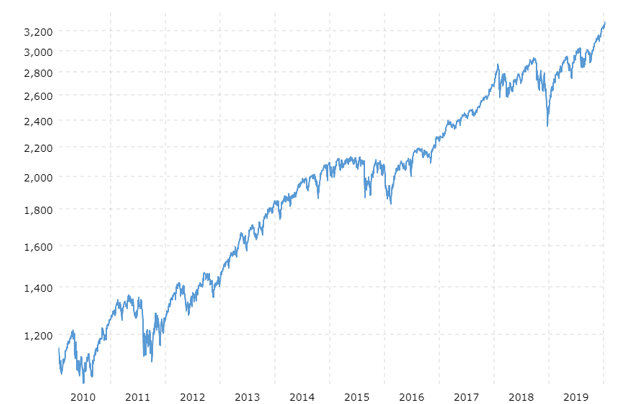
The hardest part of becoming financially literate (and eventually savvy) is overcoming inertia and getting started.
The good news is that now more than ever, thanks to the Internet, anyone motivated to learn has easy access to a rich array of educational resources. A multitude of personal finance websites, blogs, podcasts, YouTube videos, etc. are just a click or tap away.
Additionally, over the past few years, the Financial Independence movement has grown in prominence and championed financial literacy as a social cause. One result has been an explosion of additional educational opportunities.

The “bad news” (if there is any) is that the sheer volume of information available can be overwhelming. How do you know where to start or who to trust? How do you avoid feeling overloaded and succumbing to analysis paralysis?

How Can I Help?
Ever since discovering the FIRE movement a few years ago, I’ve been voraciously consuming personal finance-related blogs and podcasts. (FIRE stands for “Financial Independence, Retire Early” — but most members of the community resonate more with the independence part and less with the retirement part.)
How do you know where to start or who to trust?
As a result of drinking from the FIRE hose (pun intended) over this period of time, I’ve become aware of several valuable resources for people struggling to manage their finances.
So, in the spirit of giving back to the community, I’d like to share my recommendations for 7 easy steps you can take to jumpstart your financial literacy and/or become more financially savvy. I recommend keeping things simple and focusing on only one or two of these activities at a time.
Take Action (But Start Small)
As you build your financial literacy, don’t feel that you need to learn everything before taking action. Be diligent about avoiding analysis paralysis.
For example, you don’t need to learn how to invest in the stock market before you build an emergency savings cushion or create a budget.
Try to build a habit of making small incremental improvements. Look for some easy changes you can make. Getting some quick wins will start a feedback loop and establish a virtuous cycle to help you maintain momentum.
A great way to start taking action in small steps is Paula Pant’s One Tweak a Week challenge. Pant’s ebook, which she originally published in 2019 and has updated for 2020, offers “26 tiny tweaks that can be accomplished in less than an hour and have a huge impact on your savings.”
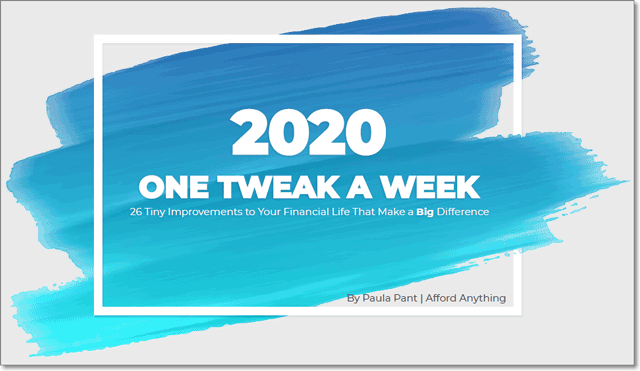
I read the 2019 edition of the ebook and highly recommend it as a tool for identifying quick wins.
Even if you do nothing else during the six months, completing Pant’s 26 tweaks will put you well on your way to building a habit of taking action. Her program also will get you ready to take even bigger steps as you increase your financial literacy.
Leverage ChooseFI
ChooseFI, which is probably best known for its twice-weekly podcast, is arguably the “mothership” of the Financial Independence movement. The show’s hosts, Jonathan Mendonsa and Brad Barrett, are outspoken champions of financial literacy for everyone.
But ChooseFI is far more than just a podcast and offers a vast array of educational resources that you can leverage on your financial literacy journey.
Below is my recommended action plan for engaging with ChooseFI content.
Listen to the Podcast
If you’re new to the podcast, don’t start with Episode 1. Instead, start with Episode 100: Welcome to the FI Community.
Why? Because after recording 99 episodes, Brad and Jonathan realized they didn’t have an ideal single episode to serve as an introduction to the FI movement. So, they recorded episode 100 with just that intent.
If you like what you hear, start listening to new episodes as they drop each week.
Monday shows feature in-depth interviews with everyone from well-known experts to everyday people who are at various stages of pursuing FI. The guests are from all walks of life, and many have “origin stories” that are compelling and inspirational.
On Friday recap episodes, Brad and Jonathan reflect on the Monday interview, share personal stories, review feedback from listeners, and sometimes do follow-up interviews.
If you have time for more, look over the list of all previous ChooseFI episodes and cherry-pick some to add to your listening queue based on which topics are most relevant to your current financial situation and goals.
Enroll In the FREE Financial Independence 101 Course at ChooseFI Academy
FI101 is a new FREE course developed by the non-profit ChooseFI Foundation to teach financial literacy. I don’t have any direct experience with the class, but according to the site:
The 11 lessons will guide you through basic financial literacy like tracking expenses and saving more, all the while introducing you to the foundational principles of Financial Independence. Using video lessons and interactive projects it will transform how you see money and the way you look forward to and prepare for the future…

Join a Local CFI Facebook Group
ChooseFI has a very active Facebook group with (as of this writing) nearly 60,000 members! I’m a member and do post every blue moon. However, overall, I don’t engage much with the group because the volume of posts is too overwhelming.

After joining, posts from the group were flooding my notifications feed. So, eventually, I revised the group settings to alert me only if one of my Facebook friends posts. Despite my decision, you may want to check out the group as it’s incessantly busy with interesting discussion threads.
In addition to the main Facebook group, ChooseFI also has hundreds of local groups around the world, each with its own dedicated Facebook group. For example, I am a member of ChooseFI Sacramento (which has over 450 members).
I host one of the two monthly meetup series in the Sacramento group. At my meetups (which typically draw about 8-12 people), we discuss a wide range of topics which so far have included: health insurance options, tales from Chautauqua, the book Quit Like a Millionaire, and reward card hacks. We’ve also had a vegan potluck (inspired by Episode 90: Vegan Path to FI) and gone on a hike.

Other local groups (e.g. San Diego) are much larger and have bigger meetups that sometimes include experts and influencers in the FIRE movement as guest speakers.
Most importantly, local groups allow you to meet like-minded people in your community with whom you can compare notes and find support. You may even find a mentor, accountability partner or mastermind group via your local chapter. If you’re in the U.S., I believe every state has at least one chapter, so the odds are good that you’re near one.
Read the Book
If you prefer to learn via books rather than via online content, then you might consider borrowing or buying the ChooseFI book, which provides a “blueprint to financial independence.” I haven’t read it, but according to a blog post by co-author Chris Mamula:
The advantage of consuming this information in a book over a podcast format is that we are able to take concepts that emerged randomly from week to week and compile them in a linear fashion. You can refer back to the book as often as you like, whenever you find the need.
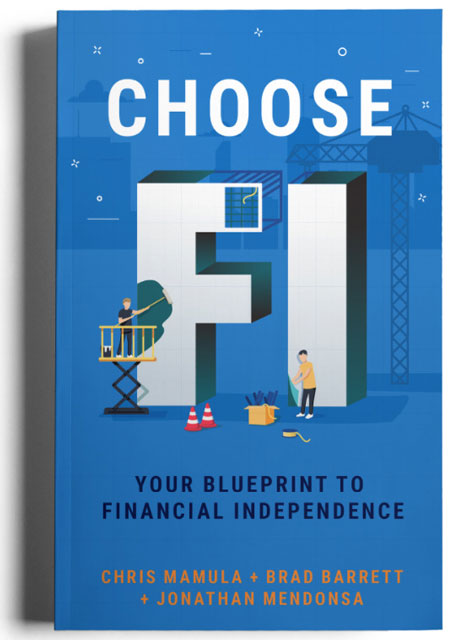
Explore the Website
The ChooseFI website offers a deep well of helpful resources for anyone on the path to financial literacy or independence.
- Episodes. In addition to listing out all of the episodes of the podcast, the site also organizes them into themes such as New to FI, Crush Debt, Investing, etc.
- Articles. Personally, the CFI blog posts are not my favorite; I find other blogs more engaging and illuminating. However, the CFI articles may be helpful to FI novices, so your mileage may vary.
- A free Travel Rewards 101 online course. I’m not much of a travel hacker, so I learned a lot from this course, which takes only an hour or two to read through. If you’re intrigued by the idea of running the “Chase gauntlet” or earning a Southwest Airlines companion pass, then this course is for you.
- The ChooseFI Resource Center contains calculators, spreadsheets and other resources from the FI community. One of the hallmarks of the FIRE movement is freely sharing knowledge.
Read Blogs
The number of blogs in the blogosphere dedicated to FI is simply overwhelming, let alone all the other personal finance blogs about managing debt, investing, and other topics.
I do have my favorite blogs, but I won’t claim to be familiar with more than at most a dozen in the personal finance space. And I certainly can’t recommend which ones are the “best.”
My general advice is to find one or two bloggers that you like and then expand your reading list organically as you come across interviews, guest posts, and recommendations in their posts.

I won’t take space here to list out my favorite blogs. However, I will mention some specific posts that may be helpful primers for anyone just beginning their financial literacy journey.
- I don’t know how to invest, and I’m afraid of making expensive mistakes. If you’re new to investing, then this post from Paula Pant offers easy to understand advice and outlines a simple common-sense strategy to get started.
- JL Collins Stock Series. If you’re ready for more in-depth advice about stock market investing, then this popular post series from “The Godfather of FI” is where many do-it-yourself types learned the ropes.
- The Shockingly Simple Math Behind Early Retirement. This famous post by Mr. Money Mustache has been the entry point to the FIRE community for many people in the movement.
- The FIRE Movement. What is FIRE Finance and How Does it Work? – Ty Roberts provides a clear and concise introduction to the FIRE movement.
If you’re new to reading blogs, I highly recommend the Feedly web and mobile app for managing your subscriptions. You might also pair Feedly with a read later app like Instapaper or Pocket to unify your reading queue and more easily read content offline.
Listen to Podcasts
As with Blogs, the number of personal finance podcasts is seemingly infinite, with new ones launching all the time.
If you search the web for “best personal finance podcasts,” you’ll find several good lists that might give you some ideas of where to start.

Of the podcasts I subscribe to, I recommend the following for anyone just getting started with financial literacy and money management.
- ChooseFI – see my detailed discussion above.
- The Stacking Benjamins Show – a light-hearted and entertaining (but nevertheless informative) “magazine-style” podcast about personal finance.
- Afford Anything – features insightful interviews (lately more focused on the psychology of personal finance) from Paula Pant who also answers questions from listeners in some episodes.
- The Side Hustle Show – host Nick Loper interviews regular people doing all sorts of interesting (and sometimes bizarre) side hustles. Loper’s podcast and blog (Side Hustle Nation) are a great place to find ideas if you’re looking for a side hustle
Read Books
I haven’t been much of a book reader for the past several years, so I’m not the best person to offer recommendations.
However, if you’re a bookworm or audiobook fanatic, then you should be able to find plenty of good selections in the personal finance space.
Below are some relatively recent titles which have received considerable attention in the FIRE community.
- Quit Like a Millionaire: No Gimmicks, Luck, or Trust Fund Required – by Kristy Shen and Bryce Leung (of Millennial Revolution fame).
- Choose FI: Your Blueprint to Financial Independence – I already mentioned this book above in the ChooseFI section of this post.
- Playing with FIRE (Financial Independence Retire Early): How Far Would You Go for Financial Freedom? – by Scott Rieckens. This is the companion book to the film documentary of the same name about a couple who shakes up their lives to pursue FI.
- Work Optional: Retire Early the Non-Penny-Pinching Way – by Tanja Hester (from Our Next Life). I learned a few things from this book, even though I was already “work optional” when I read it.

I’ll also mention two older books that have been influential in the FIRE community.
- The Simple Path to Wealth – by JL COLLINS whose investment strategies are widely followed.
- Your Money or Your Life: 9 Steps to Transforming Your Relationship with Money and Achieving Financial Independence – by Vicki Robin, a progenitor of the FIRE movement who updated her classic personal finance book in 2018.
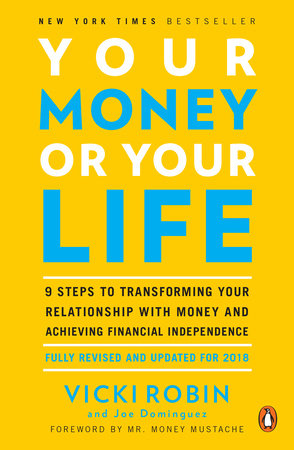
Learn the Tools
Part of becoming financially literate (and hopefully savvy) is discovering and learning various tools that can help you manage your money.
Everyone is different, with unique preferences for how they like to work (e.g. some people are numbers geeks and/or tech-savvy and some aren’t). Hence, best in class, one-size-fits-all recommendations are difficult, if not impossible, to make.
That said, below are some common types of tools used by members of the FIRE community.
Spreadsheets
Many people like to maintain spreadsheets in Microsoft Excel or Google Sheets so they can have complete control over customization. If you’d like to start from a template, then many bloggers in the FIRE community share their carefully built spreadsheets for others to use. Also, a tool like Tiller can help you automate data import if you’d like to avoid manual data entry.

Budgeting & Expense Tracking
If you’re looking for a budgeting tool, YNAB (You Need A Budget) is popular with reviewers and users.
Net Worth Tracking
If you’re planning to retire early (or hit some other financial milestone), you need to know how much you have now, how much you will need, and how long it will take you to reach your goal. Personal Capital is, by far, the most popular tool for monitoring your assets, investments, and debts and measuring your progress towards your goal(s).
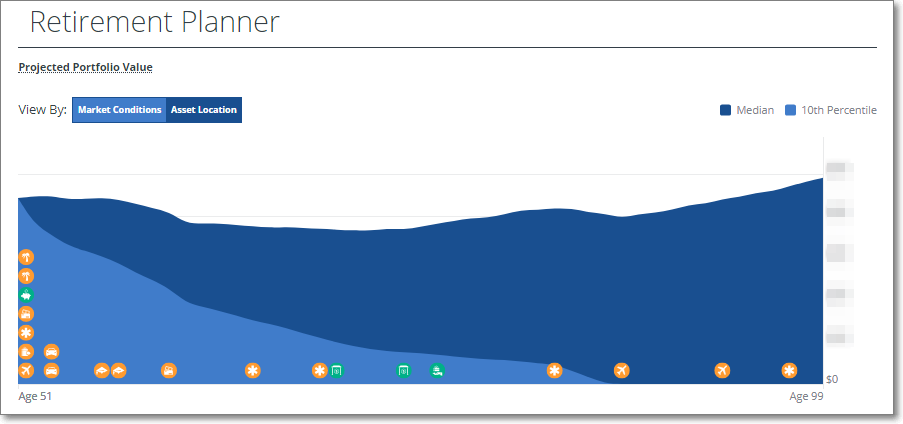
Credit Monitoring
If you’ve reached a baseline of financial literacy, hopefully, you know that you should be trying to build good credit. Equally importantly, you should be monitoring your credit score and reports not only to measure your progress but also to detect identity theft.
At minimum, you should check each of your credit reports (for free) once per year at Annual Credit Report.com. The conventional wisdom is to check every four months, rotating between the three agencies.
An even better practice is to also use a free credit monitoring tool like Credit Karma, which will alert you to changes in your credit report and allow you to pull your credit report more often (from two of the three agencies).

In case you’re curious, I use a combination of Microsoft Excel and Personal Capital as my primary tools. I also monitor my credit in various ways, including Credit Karma.
Talk to Experts
A final way to become more financially literate is to talk to experts (or to anyone who is more financially savvy than you are). If you reside in the same geographic area, you might ask them to coffee to “pick their brain.”

Below are some ideas for where you might find such people:
Local Meetups
Depending on the size of your community, if you search Meetup.com, you may find one or more stock investing clubs, real estate investing groups, or other personal finance-related groups. You might also search Facebook to see if a ChooseFI local group is nearby.
One word of warning: beware of investment meetups that purport to be educational but, in fact, turn out to be sales pitches from advisors looking for new clients.
Online Communities
If you’re a member of some Facebook groups or other online communities, then you might reach out to some of the active members to see if they are willing to talk to you.
Financial Advisors
Consulting a financial advisor is not an all-or-nothing proposition. You don’t have to hire a financial advisor to manage your money if all you want to do is analyze your portfolio, review your goals, or solicit advice.
You may want to talk to an advisor just once or consult them periodically on an ad hoc basis. At the other extreme, depending on your situation, you may want to hire an advisor on a long-term basis.
When looking for an advisor to consult, the key is to find one who acts as a fiduciary, who is “fee-only” (no commissions), and who has flexible pricing options (e.g. is willing to charge you by the hour if your needs are modest). Don’t meet with “fee-based” planners whose primary interest may be be to hard-sell you on investment products.
One example of the type of advisor who would act only in your best interest is Sean Mullaney, the FI Tax Guy who “offers fiduciary, fee-only, hourly, and advice-only financial planning” (and who frequently appears on the ChooseFI podcast to provide tax advice).
Be careful about committing to an assets under management model (where you pay an annual fee based on a percentage of your portfolio). Do some due diligence research and make sure that you will receive a high-quality, high-touch level of service. Also, think about whether this model might be overkill for your needs.
If you do decide to enter an assets under management arrangement, you should pay at most 1% (and hopefully quite a bit less). However, in most cases, paying for an advisor’s time on an hourly basis will be more cost-efficient.
For a good discussion about the various compensation models for advisors, see the post: Confessions of an Ex-AUM Financial Advisor.
Final Thoughts
Wow, this post turned out to be far longer and more detailed than I had originally envisioned. Hopefully, my 7 suggestions will provide you one or more catalysts to jumpstart your efforts to build your financial literacy and become more financially savvy.
Your Turn
Please comment if you have additional resources and strategies to add to my list or if you have questions about any of my recommendations. (Note: I moderate all comments so you may experience a delay before your comment appears on the post. For any SPAMMERS out there, don’t waste your time submitting as I will reject your comment.)

